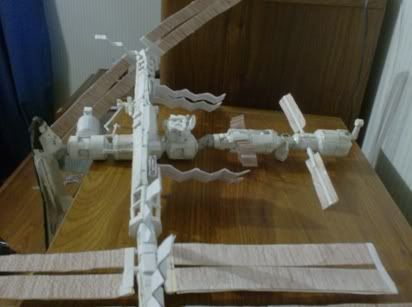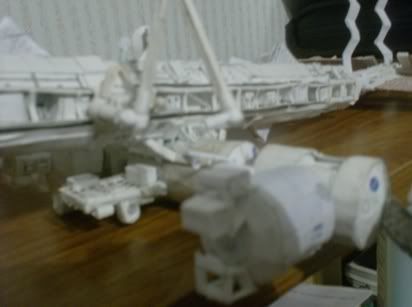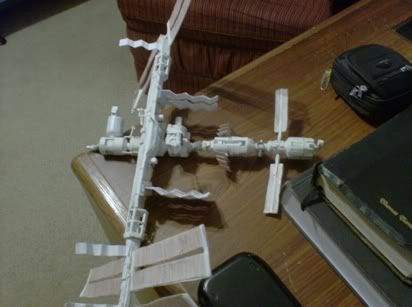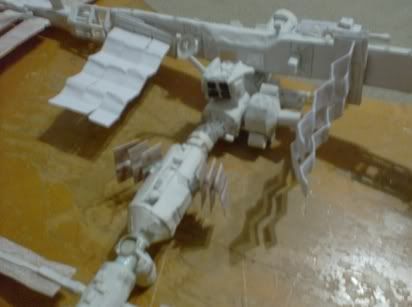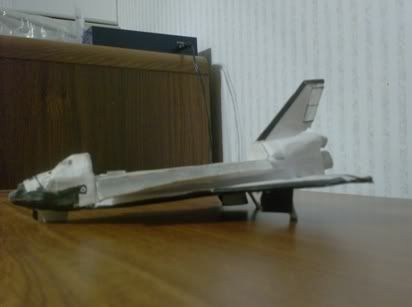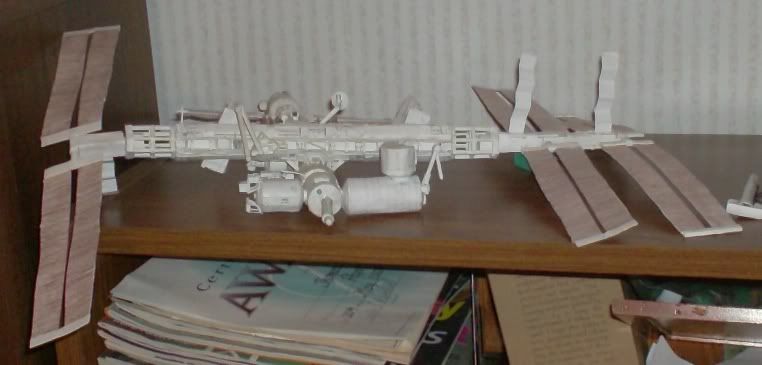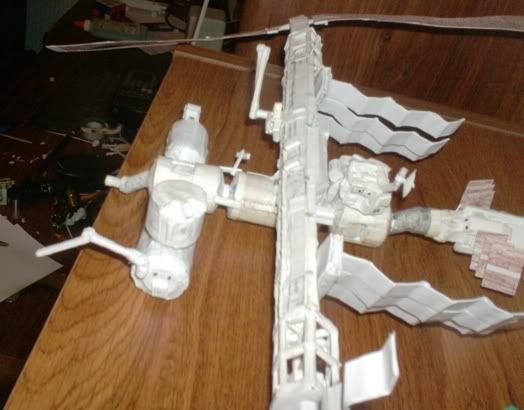Negative, I made everything completely from scratch. The basic idea is to cut out a long rectangular piece of paper, and roll it up into a tube and glue it in place. That forms the basis for the vast majority of my models. From there, you can use combinations of such tubes, as well as tubes inside of tubes to create more complex things.
I also printed out some small pictures of the ESA and NASA emblems, and glued them on.
To make simple hinge joints, you simply have a larger cylinder over a slightly smaller cylinder, whose ends are wide enough to keep the larger cylinder from sliding off. The smaller inner cylinder can be glued in place to remain stationary, but the larger outer one is free to rotate around.
For the solar array joints (the ones that make 360 degree turns), you have a cylinder inside a cylinder. The inner cylinder is smaller of course, but one end of it is a bit larger so that it cannot slide out of the outer cylinder. Furthermore, the outer cylinder becomes narrow just after the inner cylinder's wide point.
I'll make a picture to illustrate this...
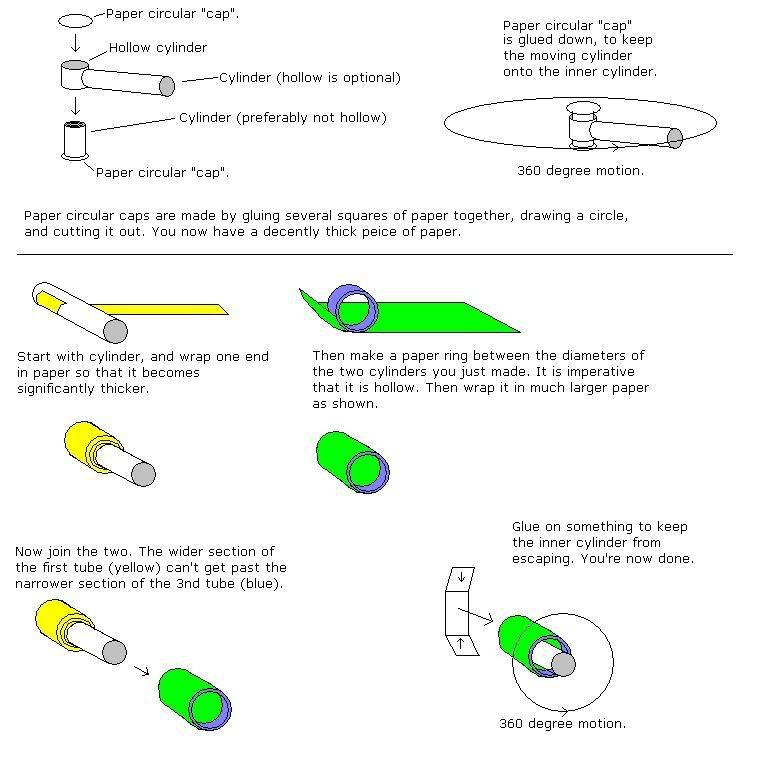
Docking is achieved by making two cylinders of almost equal diameter on both objects. The spacecraft's cylinder is just a tad smaller, so as to tightly fit into the slightly wider cylinder on the ISS model.
